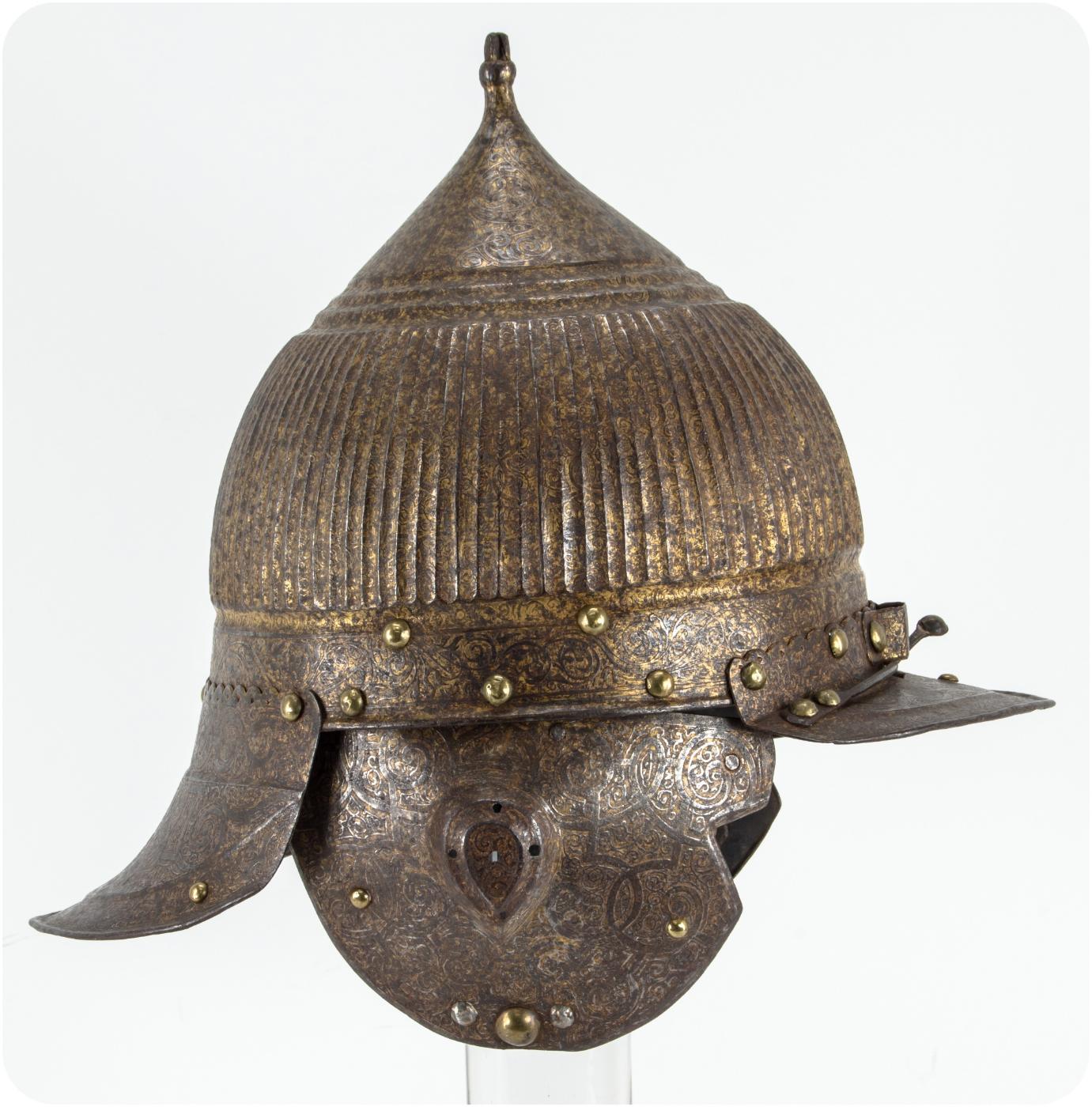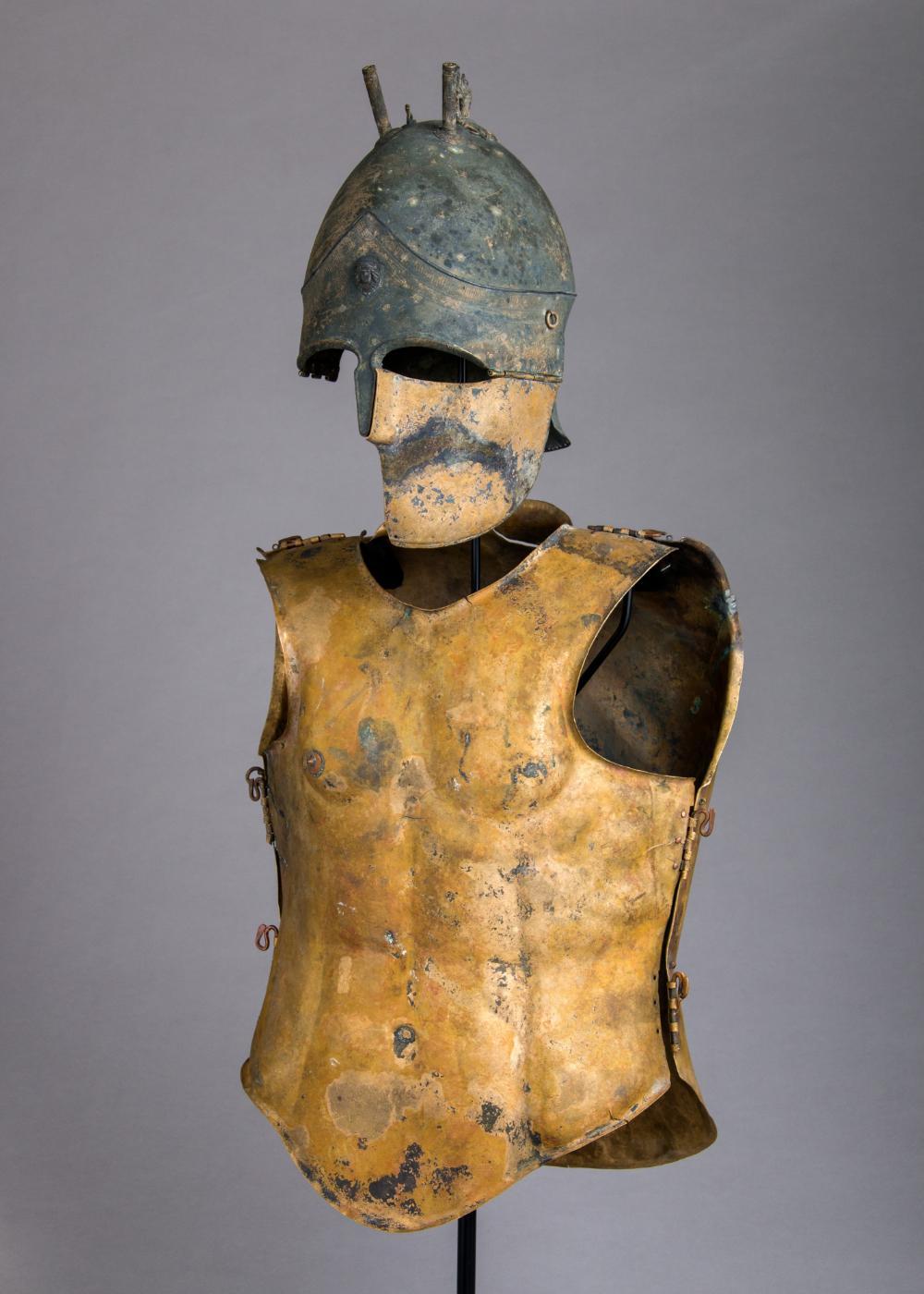Assembled from 1976 to the present, the Ronald S. Lauder collection of arms and armor is outstanding for the exceptional rarity and quality of the objects, their illustrious origins, and their typological variety. The works include a 17th-century field armor made in Tuscany in a workshop patronized by the Medicis, which is one of only two known in the world; and an armor for field and tournament, complete with shaffron, which was made in the royal court workshops at Greenwich for presentation as a gift to Friedrich Ulrich, Duke of Brunswick-Wolfenbüttel (1591–1634), in the early 17th century.
The Greenwich armor is the best documented work of the Greenwich Armouries in existence, as well as the only Greenwich armor to retain any polychrome decoration. This monumental gift will make it possible for the matching gauntlets, which entered the Museum's collection in 1913, to be permanently reunited with the armor to which they originally belonged. The now-complete armor will be on display in the galleries beginning in early December for a six-month period.
Pierre Terjanian, Arthur Ochs Sulzberger Curator in Charge of the Department of Arms and Armor, added: "This extraordinary collection, so patiently and expertly assembled and cared for over four decades, is a historic and transforming gift to the department. It will provide stunning expressions of the armorer's art that were previously not represented in the Museum's collection, and will add depth to areas in which we are already strong. The quality of the works is truly unmatched, and with this gift Mr. Lauder will also support a number of enhancements to our visitor experience and our work more generally."
Earlier this year, in honor of the Museum's 150th anniversary, Mr. Lauder made a promised gift of an early 17th-century silvered and gilt Flemish half-shaffron made for King Philip IV of Spain or his brother Don Carlos to The Met. It will be on view along with 45 other objects in the upcoming exhibition Emperors, Artists, and Inventors, which opens on December 21.
"Since I was a teenager I have been fascinated by and had a special love for arms and armor," said Ronald S. Lauder. "I would spend hours at The Met, imagining the stories of knights, kings, and princes. Later, I realized that arms and armor had a distinct beauty all its own, which represents the best sculpture of the 15th and 16th centuries. In my early 20s, I began assembling my own collection with the help of Stephen Grancsay (1929–1964), one of The Met's early curators for arms and armor. The donation we are announcing today represents nearly 55 years of collecting, and I could not have done it without the help of the curators at The Metropolitan Museum of Art. When I began thinking about where I wanted my collection to ultimately be displayed, it was only fitting that it would all come back to The Met. Just as I have learned and continue to learn at The Met, I know that this collection will educate future generations about this important period in our history, and I see another young person, years from now, coming to The Met with the same excitement and fascination that I had so many years ago."
The gift of Ronald S. Lauder's collection includes many objects that will strengthen the department's ability to present key stylistic developments across Europe from the late Middle Ages through the Renaissance. Among the objects are landmarks in the study of European arms and armor, such as a parade burgonet of silvered and gilt steel embossed with ornament in low relief, which was specially made around 1560 for a member of the Colonna family of Rome, as well as important shields, swords and daggers, maces, crossbows, and firearms.






























